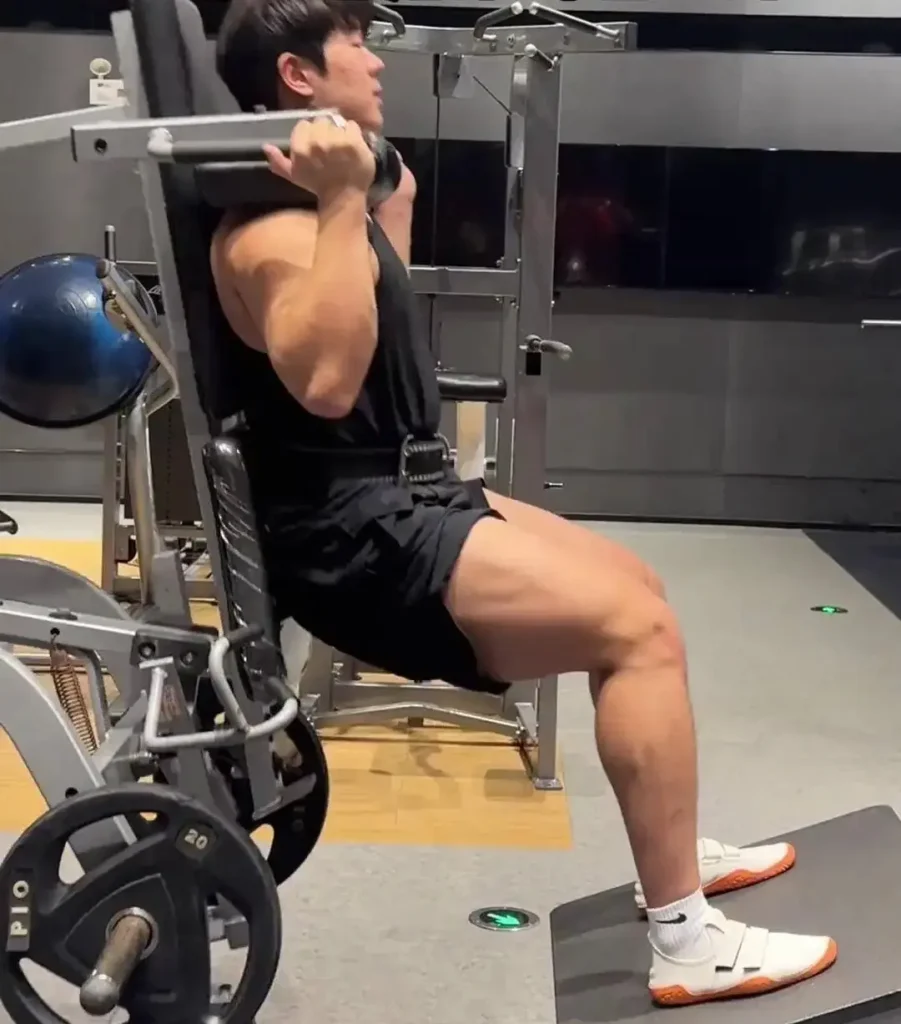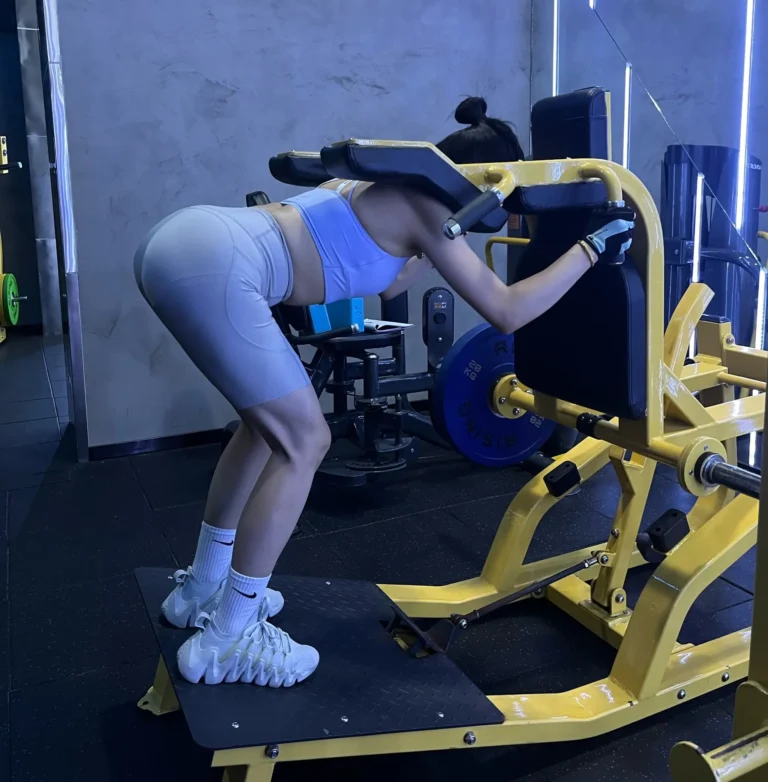Can Hack Squats Help Build Muscle Mass
Table of Contents
The Principle of Muscle Stimulation by the Hack Squat
The Advantages of the Hack Squat in Promoting Muscle Growth
Factors Affecting Muscle Growth from Hack Squats
On the journey to pursue physique and strength, muscle growth is a core goal for many fitness enthusiasts. Whether beginners or experienced fitness buffs, everyone desires to achieve more developed and stronger muscles through scientific training methods. The hack squat, a common exercise in the gym, has become an essential part of many fitness plans due to its unique advantages.
The hack squat, which appears to be a simple movement, can indeed help us realize our dream of muscle growth. As a compound exercise, the hack squat effectively stimulates the lower limb muscles through the coordinated action of multiple joints, providing the basic conditions for muscle growth.

The Principle of Muscle Stimulation by the Hack Squat
The hack squat primarily activates several key muscle groups in the lower limbs. During the movement, the quadriceps play the leading role. They are responsible for extending the knees, allowing our legs to gradually straighten from a bent position. When squatting to the lowest point, the quadriceps are fully stretched, and when we rise, they contract strongly to generate the force needed to push the body upward. This process of muscle stretching and contraction causes minor damage to the muscle fibers.
At the same time, the gluteus maximus is also actively involved. During the squatting process, the gluteus maximus stabilizes the body and prevents the pelvis from tilting backward. In the rising phase, the gluteus maximus plays a key role in assisting the upward movement and extending the hip joint. The hamstrings, although not as dominant as the quadriceps and gluteus maximus, play a synergistic role during the squat. They help stabilize the knee joint and prevent it from moving too far forward. They also act as a counterforce when the body leans forward.
From a muscle physiology perspective, when the muscles are stimulated by the hack squat, minor tears occur. These micro-injuries trigger the body’s repair mechanism. During the repair process, muscle fibers gradually thicken, leading to an increase in muscle mass. This is a dynamic process in which muscles continuously grow and develop through repeated stimulation and repair.

The Advantages of the Hack Squat in Promoting Muscle Growth
Safety Ensures the Foundation for Growth
Compared to the free squat, the hack squat has significant safety advantages. Although free squats can work more muscle groups, they require high technical skills. A slight mistake can easily lead to injuries in the waist, knees, and other areas. The hack squat machine, however, has a stable backrest that effectively prevents the risk of lumbar spine injuries caused by excessive forward lean during the squat.
This safety feature creates a favorable training environment for fitness enthusiasts, allowing them to perform higher-intensity, multi-set, and multi-repetition training with peace of mind. For example, fitness enthusiasts can gradually increase the weight on the hack squat machine without worrying about accidental injuries caused by balance issues. As long as they train with the correct posture, they can create conditions for continuous muscle stimulation, thereby laying the foundation for muscle growth.
Fixed Trajectory Optimizes Muscle Activation
The hack squat machine restricts the body’s movement trajectory, allowing muscles to focus more on vertical resistance movement. Compared to free squats, the hack squat reduces the compensation of other non-target muscle groups.
In free squats, fitness enthusiasts may unconsciously engage core muscles, calf muscles, and other non-target muscle groups to maintain balance. The hack squat, with its fixed trajectory, allows the leg muscles, especially the quadriceps, gluteus maximus, and hamstrings, to focus more on generating force.
This targeted muscle training approach improves training efficiency. Muscles receive more concentrated stimulation during each movement, thereby effectively promoting muscle growth. For example, when performing the hack squat, fitness enthusiasts can clearly feel the burning sensation in their leg muscles, indicating that the target muscle groups have been fully activated.
Feasibility of Progressive Overload
Another advantage of the hack squat machine is its convenience in adding or reducing weight plates. This allows fitness enthusiasts to gradually increase training intensity according to their own conditions, following the principle of progressive overload, which is a key factor in muscle growth.
By gradually increasing the training weight, muscles are constantly challenged and forced to adapt, leading to growth. After each training session, fitness enthusiasts can reasonably plan the weight increase for the next session based on their recovery and muscle sensation.
For example, fitness enthusiasts can start with a lighter weight, such as 60% of their 1RM (one-rep max), and perform 3 – 4 sets of 10 – 12 repetitions. As training progresses and they can easily handle this weight, they can increase the weight to 70% of their 1RM and adjust the number of sets and repetitions, such as performing 4 – 5 sets of 8 – 10 repetitions. This progressive overload training method continuously stimulates muscle growth, achieving steady muscle mass increase.

Factors Affecting Muscle Growth from Hack Squats
Training Intensity and Load
The choice of training weight is crucial for muscle growth through hack squats. Generally, using 60% – 80% of the 1RM for multiple sets and repetitions is an effective method to promote muscle growth.
For example, if a fitness enthusiast’s hack squat 1RM is 100 kg, choosing a weight of 60 kg for training allows for 3 – 5 sets of 10 – 12 repetitions. This is suitable for beginners or during the initial training phase, focusing on muscle endurance and activation of muscle groups.
When using a weight of 80 kg, the number of sets can be reduced to 3 – 4, with 8 – 10 repetitions per set. This training intensity is more suitable for fitness enthusiasts with some training experience, as it more effectively stimulates muscle growth.
However, overtraining and choosing too heavy a weight also pose potential risks. Excessive weight can lead to muscle strains, joint injuries, and other issues, causing training to stall and even affecting long-term training plans.
Training Frequency and Recovery
The appropriate frequency of hack squat training per week is another factor to consider. Overly frequent training can exceed the muscles’ recovery capacity, leading to accumulated muscle fatigue and negatively impacting muscle growth and training effectiveness. On the other hand, too long of a training interval may cause muscles to revert to their original state, failing to effectively stimulate continuous muscle growth.
Generally, beginners can perform hack squats once or twice a week. This helps them gradually adapt to the training intensity while providing sufficient recovery time for their muscles. Intermediate fitness enthusiasts can increase the frequency to two or three times a week but must pay attention to arranging the training intensity reasonably to avoid excessive fatigue. Advanced fitness enthusiasts can engage in higher-frequency training based on their individual conditions and recovery capabilities, but they should still prioritize the recovery process.
Adequate rest and proper nutritional supplementation play a vital role in muscle recovery and growth. Muscles need time to repair and grow after training, and nutrients are the key raw materials for this process.
Proper Form
Improper form can significantly affect the muscle-building results of hack squats. For example, performing a half-squat does not fully stretch and stimulate the quadriceps and gluteus maximus, resulting in inadequate muscle training. Hunching the back and chest can lead to excessive lumbar spine curvature, increasing the risk of injury while also dispersing the force, causing uneven activation of the target muscle groups.
Research indicates that proper form can significantly enhance the activation of target muscle groups. Compared to incorrect movements, correct hack squat form can increase the activation of the quadriceps by 30% – 40% and the gluteus maximus by 20% – 30%. Therefore, fitness enthusiasts must strictly follow the correct movement guidelines when performing hack squats to ensure effective muscle stimulation and achieve the desired muscle-building results.

How to Achieve Optimal Muscle Growth with Hack Squats
Scientific Training Plan
A well-structured training plan is the key to achieving optimal muscle growth with hack squats. Based on individual conditions of fitness enthusiasts, such as training experience, physical fitness levels, and muscle foundations, training plans suitable for different stages can be developed.
For beginners, a training frequency of once a week is recommended, performing 3 – 4 sets of 10 – 12 repetitions with lighter weights. The focus should be on mastering the correct movement techniques and activating the target muscle groups. As training progresses, the training intensity can gradually be increased. For example, after 4 – 6 weeks, the training frequency can be adjusted to twice a week, increasing the number of sets to 4 – 5 and the repetitions to 8 – 10, while also appropriately increasing the weight.
Intermediate fitness enthusiasts can adopt a training frequency of two to three times a week. Depending on different training stages, various training intensities, sets, and repetitions can be arranged. For instance, during the strength-building phase, heavier weights (80% – 85% 1RM) can be used for 4 – 6 sets of 6 – 8 repetitions. In the muscle-building phase, moderate weights (70% – 80% 1RM) can be employed for 4 – 5 sets of 8 – 12 repetitions, ensuring proper form throughout.
Advanced fitness enthusiasts can engage in higher-frequency training, such as three to four times a week, combining different training methods (e.g., drop sets, supersets) and training intensity arrangements to further increase muscle mass.
Combining with Other Exercises
While hack squats can effectively stimulate the lower limb muscles, combining them with other exercises is recommended to achieve balanced muscle development throughout the body and better support the growth of lower limb muscles.
Leg presses can be paired with hack squats to further work the quadriceps and gluteus maximus, enhancing leg strength. Adding leg curls focuses on the hamstrings, ensuring thorough training of the posterior lower limb muscles. Additionally, calf raises should not be overlooked, as they effectively work the calf muscles, contributing to a more complete lower limb muscle profile.
Besides lower limb training, upper body and core strength exercises are essential. Performing upper body exercises like bench presses and pull-ups, along with core strength exercises such as planks and sit-ups, can create a comprehensive training system. This not only helps improve overall body strength and coordination but also better supports lower limb muscle growth while preventing sports injuries caused by muscle imbalances.

Emphasizing Nutritional Supplementation
Muscle growth requires adequate nutritional support. Protein is a key substance for muscle repair and synthesis, and fitness enthusiasts should ensure sufficient intake of high-quality protein daily. Chicken breast, fish, legumes, and eggs are all good sources of high-quality protein. For example, fitness enthusiasts can consume 1.6 – 2.0 grams of protein per kilogram of body weight daily to meet the demands of muscle growth.
Carbohydrates provide energy for training, enabling fitness enthusiasts to maintain high-intensity workouts. Choosing complex carbohydrates like whole wheat bread, brown rice, and oats can offer sustained energy support before training, helping them perform better in hack squats. Additionally, carbohydrate intake after training aids muscle recovery and glycogen replenishment.
Healthy fats play an important role in hormone secretion and the normal functioning of the body. Unsaturated fatty acids found in olive oil, nuts, and fish oil can help maintain normal hormone levels, thereby creating a favorable internal environment for muscle growth.
Moreover, the timing of nutritional intake also affects muscle growth after hack squats. Before training, consuming an appropriate amount of carbohydrates and a small amount of protein, such as a banana smoothie with milk, can provide energy for the workout. Within 30 – 60 minutes after training, consuming foods rich in protein and carbohydrates, such as chicken breast with sweet potatoes, helps with rapid muscle repair and growth. Daily meal arrangements should also be balanced and reasonable to ensure the body receives the necessary nutrients at all times.
Conclusion
The hack squat is a highly effective exercise that can help fitness enthusiasts increase muscle mass.
Whether beginners or fitness enthusiasts with some training experience, everyone can incorporate the hack squat into their long-term training plans. As long as they persist in training and continuously adjust their training methods and nutritional strategies based on their individual conditions, they will surely achieve the desired muscle results, enhance their overall fitness effects, and display a more aesthetically pleasing and stronger physique.


The hack squat is an essential exercise for anyone serious about building lower body strength and muscle growth. It effectively targets the quadriceps, glutes, and hamstrings, making it a versatile addition to any fitness routine. By incorporating hack squats into your training, you can ensure balanced muscle development and improved overall performance. However, it’s important to maintain proper form to avoid injury and maximize results. How can one effectively integrate hack squats into a weekly workout regimen to see consistent progress?
Before incorporating Hack Squats into your weekly training routine, you need to first conduct a physical assessment. Then, based on different training phases (beginner, intermediate, or advanced), skillfully integrate Hack Squats into your plan. Additionally, different populations require tailored training programs. For specific details, you can refer to this article:Incorporate Hack Squats into Workout Routine: How To